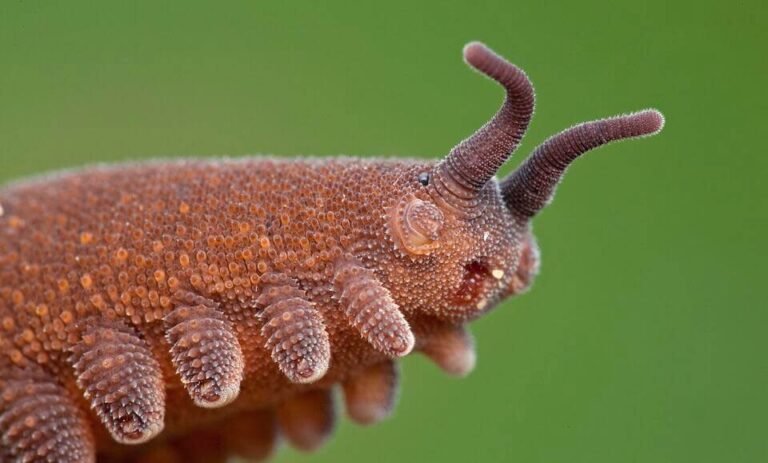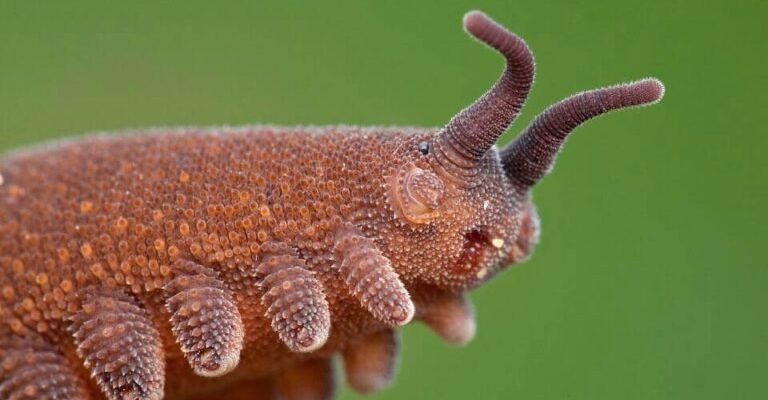
Velvet worms, or *Onychophora*, are not your typical pets, and that’s what makes them so intriguing. They’re often referred to as “living fossils” because they’ve existed for millions of years. Their unusual characteristics and behaviors can spark curiosity among students and create a fun, educational environment. But, can they really work as classroom pets? Let’s dig deeper into the potential benefits and challenges of welcoming velvet worms into your classroom.
What Are Velvet Worms?
Let’s start with the basics: what exactly are velvet worms? These peculiar little animals are not worms in the traditional sense but rather an ancient group of arthropods. They typically have a soft, segmented body covered in tiny, velvety hairs. They also possess many stubby legs (up to 16 pairs) that help them move through their leaf-litter habitats. You might think they look like someone combined a caterpillar and a slug, and honestly, that’s not too far off!
Velvet worms are quite fascinating when it comes to their feeding habits. They are carnivorous and use a sticky slime to catch their prey, usually small insects. This unique hunting method can be a great talking point in the classroom, as it showcases different survival strategies in the animal kingdom. Plus, learning about their ecological role can lead to discussions about food chains and biodiversity.
The Benefits of Velvet Worms in the Classroom
You might be wondering, “What’s the big deal about having velvet worms in the classroom?” They offer several benefits, especially when it comes to education and engagement. Here are some reasons to consider introducing them into your classroom pet program:
- Unique Learning Experience: Unlike the typical classroom pets, velvet worms can introduce students to lesser-known species and concepts in biology, ecology, and evolution.
- Hands-On Learning: Observing the behavior of velvet worms can lead to hands-on experiments that excite students’ minds and curiosity.
- Encouraging Responsibility: Caring for a velvet worm teaches students about responsibility and empathy towards living creatures, which is essential in helping them grow as individuals.
Integrating these creatures can create a lively atmosphere where students feel more connected to nature. Imagine seeing their eyes light up as they watch a velvet worm glide across its habitat, truly a memorable experience.
How to Set Up a Velvet Worm Habitat
Creating the right environment for your velvet worms is crucial to their well-being. A well-designed habitat can enhance both the worms’ health and the learning experience for your students. Here’s how to do it:
1. **Choose the Right Container:** You can use a terrarium or a clear plastic container. It needs to be well-ventilated but secure enough to prevent the worms from escaping.
2. **Substrate Matters:** Use a mix of soil, leaf litter, and moss to mimic their natural habitat. This not only keeps them comfortable but also provides them with the organic materials they thrive on.
3. **Humidity is Key:** Velvet worms need a moist environment to survive. You can maintain humidity by misting the habitat regularly, ensuring it doesn’t dry out.
4. **Temperature Control:** Keep the habitat in a room with stable temperatures, ideally between 20-25°C (68-77°F). Avoid placing it near windows or heating vents.
Setting up their habitat can be a fantastic classroom project that teaches students about ecology and environmental science.
Feeding Velvet Worms in the Classroom
Feeding time can be one of the most exciting moments when caring for velvet worms. Here’s what you need to know about their diet:
– Velvet worms eat small insects like fruit flies or small crickets. You can create a routine that involves students helping to feed them, making it even more engaging.
– To feed them, you can simply drop a few insects into the habitat and watch the worms do their thing. It’s an excellent opportunity for kids to observe nature in action.
– Be sure to discuss the importance of keeping their diet balanced. This can lead to conversations about nutrition and health, both in humans and animals.
Letting students be part of the feeding process can create a sense of ownership and responsibility. Plus, it’s a fun, hands-on way for them to learn about animal behavior.
Challenges of Keeping Velvet Worms
Before you rush out to get velvet worms, it’s important to consider some challenges. While they’re fascinating, there are a few factors to keep in mind:
– **Care Requirements:** Velvet worms require a bit more attention than your average classroom pet. If humidity and temperature aren’t maintained, they can become stressed or ill.
– **Limited Lifespan:** These creatures have a relatively short lifespan compared to other pets, which might lead to difficult conversations for students when a worm passes away.
– **Availability and Legal Issues:** Depending on your location, it might be hard to find velvet worms, and some regions may have restrictions on keeping certain species. Always check local regulations before proceeding.
Addressing these challenges can prepare you and your students for a more realistic view of pet care, reinforcing that keeping any living creature comes with responsibilities.
How to Engage Students with Velvet Worms
Now that you’re sold on the idea of velvet worms, how can you make the experience engaging for your students? Here are some ideas:
– **Observation Journals:** Have students keep observation journals to record their findings. They can draw, write notes, and track any changes in behavior, creating a valuable learning resource.
– **Class Discussions:** Use the worms as a starting point for discussions about evolution and biodiversity. Why have these creatures survived for millions of years? What can we learn from them?
– **Creative Projects:** Encourage students to create presentations or art projects centered around velvet worms. This can reinforce what they learn and allow them to express their creativity.
Engaging students with hands-on activities fosters a love for learning while deepening their understanding of complex topics.
So, can velvet worms be used in classroom pet programs? Absolutely! They can introduce students to unique biological concepts while providing a practical, hands-on learning experience. Of course, there are challenges to consider, but with the right approach, these fascinating creatures could become a highlight of any classroom.
If you’re ready to explore this option further, start by researching local regulations and finding a reliable source for purchasing velvet worms. Who knows? You might just inspire the next generation of biologists! They could learn not just about velvet worms but also about the importance of empathy, responsibility, and curiosity in their everyday lives.

